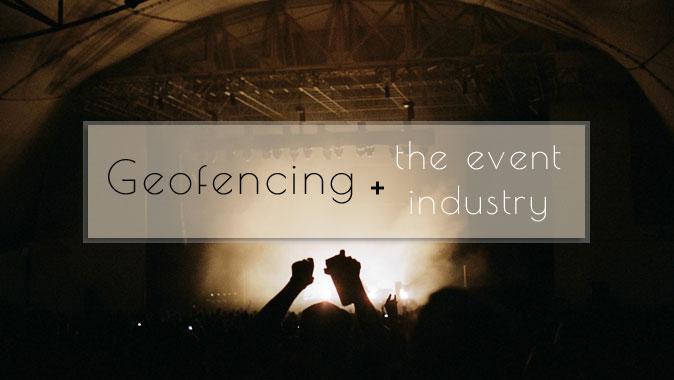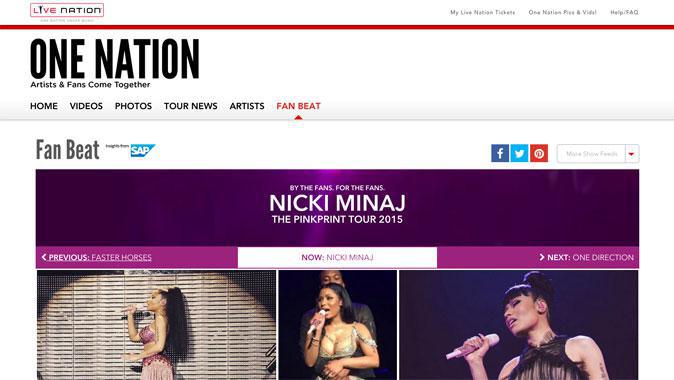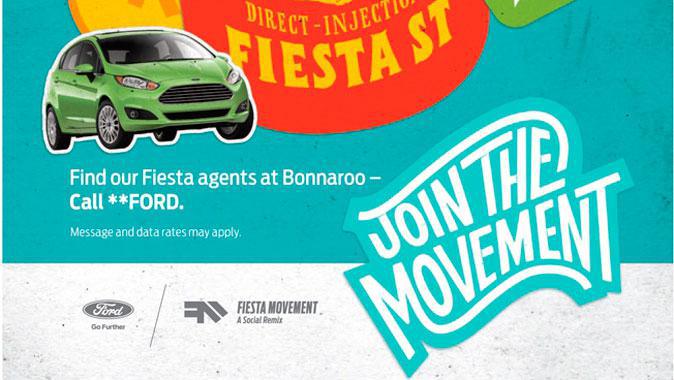Geofencing and the event industry
Written by GoodBarber Team on

If there’s one area of expertise where the need to constantly keep the audience interested is pressing, it is the event industry. If one wants a good turnout, the bar is now higher than ever. How to keep up with people’s expectations? If creating an app for an upcoming event is now a given, the time has come to enter a new dimension, with Geofencing.
What is Geofencing
A geographic area = an automated notification
Geofencing allows you to define geographical areas where notifications will be sent out automatically for your app users.
Think of geofencing as a customizable virtual area within which you can interact with your app users, by triggering advertisement, offers, designated content, etc. Once you define a geofence your users behavior will trigger the notifications, whether they enter the area, dwell in the area for a predefined amount of time or exit the area.
Aside from the mandatory opt-in process, which is really the only con, the possibilities are almost endless. Relevance is probably the biggest pro. As targeting grows hyper-local, offers get more relevant. Think about it: you gain control other where your user is, what time of day it is. A dream come true for any marketer. What’s more, it’s a one to one basis communication which makes it all the more valuable.
The new flyer
What about geofencing for the event industry in particular? For one, it increases attendee engagement. It enables global sponsors to have a local reach. It provides real-time analytics, a whole new kind of event intelligence: know when attendees are part of the event, the duration of attendance, peak attendance, etc.
Looking for inspiring examples? Here are a few breakthrough geofencing techniques.
Geofencing allows you to define geographical areas where notifications will be sent out automatically for your app users.
Think of geofencing as a customizable virtual area within which you can interact with your app users, by triggering advertisement, offers, designated content, etc. Once you define a geofence your users behavior will trigger the notifications, whether they enter the area, dwell in the area for a predefined amount of time or exit the area.
Aside from the mandatory opt-in process, which is really the only con, the possibilities are almost endless. Relevance is probably the biggest pro. As targeting grows hyper-local, offers get more relevant. Think about it: you gain control other where your user is, what time of day it is. A dream come true for any marketer. What’s more, it’s a one to one basis communication which makes it all the more valuable.
The new flyer
What about geofencing for the event industry in particular? For one, it increases attendee engagement. It enables global sponsors to have a local reach. It provides real-time analytics, a whole new kind of event intelligence: know when attendees are part of the event, the duration of attendance, peak attendance, etc.
Looking for inspiring examples? Here are a few breakthrough geofencing techniques.
Concerts and Festivals
Concerts are memorable experiences which tend to naturally drive attendee engagement. Especially with the extensive use of social media, fans now not only spontaneously take photos but also share them, interact with the artists, etc. How is geofencing becoming a part of the concert experience?

Live Nation has been experiencing with geofencing techniques. Their "Fan Beat" feature curates fan social content through geofencing: "The beauty of geo-fencing is that, unlike a hashtag, you’re not asking someone to take an extra step," Live Nation says. "If you’re literally in that geo-fence, we’re going to capture that and showcase it."
Matchbox Twenty was one of the first bands to pick up on the trend, as early as during their 2013 tour! Nick Lippman, the band's manager explains: "We can talk to fans as they come in and out of the venue, welcome them to the show, give them a hashtag to participate. It’s a great way to get information to people without being uber-intrusive but also remind people what they can do to be an interactive part of the show. We’ve had killer fan engagement."
Matchbox Twenty was one of the first bands to pick up on the trend, as early as during their 2013 tour! Nick Lippman, the band's manager explains: "We can talk to fans as they come in and out of the venue, welcome them to the show, give them a hashtag to participate. It’s a great way to get information to people without being uber-intrusive but also remind people what they can do to be an interactive part of the show. We’ve had killer fan engagement."

Ford was one of the first brands to test geofencing in a marketing campaign, during the Bonnaroo Music Festival (Tennessee, USA). Ford placed call to actions in strategic areas of the Festival, "Call **FORD". They geofenced the grounds of the Festival and imagined a customized experience tailored to the audience. Users could also enter a giveaway to win a car from the Ford garage placed on site. Driving engagement takes on a whole new meaning :)
One can easily imagine messages being delivered to registered voters at their homes to remind them to cast their vote. Candidates could also geofence specific communities and send out unique messages for each voting segments, low employment areas, high income areas…
Geofencing can also drive up support and engagement during conventions and rallies.
One can easily imagine messages being delivered to registered voters at their homes to remind them to cast their vote. Candidates could also geofence specific communities and send out unique messages for each voting segments, low employment areas, high income areas…
Geofencing can also drive up support and engagement during conventions and rallies.
Tourism Offices
To finish on a lighter note, the Montana Office of Tourism also took to geofencing in quite an impressive way, with the help of SMG Advertising .
In order to promote their beautiful skiing slopes they proceeded to targeting consumers who were currently in ski areas throughout the US but with a comparatively less exciting ski experience. "It caught them at the perfect moment and showed them that better skiing was available to them."
They also geofenced the entire State of Montana to create a virtual barrier and thus track the percentage of people who received a Montana ad and visited the state during the ski season.
Think of geofencing possibilities for your Tourism App !
Learn more about Geofencing technology and Geofencing vs Beacons
In order to promote their beautiful skiing slopes they proceeded to targeting consumers who were currently in ski areas throughout the US but with a comparatively less exciting ski experience. "It caught them at the perfect moment and showed them that better skiing was available to them."
They also geofenced the entire State of Montana to create a virtual barrier and thus track the percentage of people who received a Montana ad and visited the state during the ski season.
Think of geofencing possibilities for your Tourism App !
Learn more about Geofencing technology and Geofencing vs Beacons